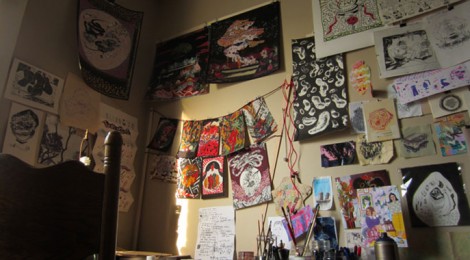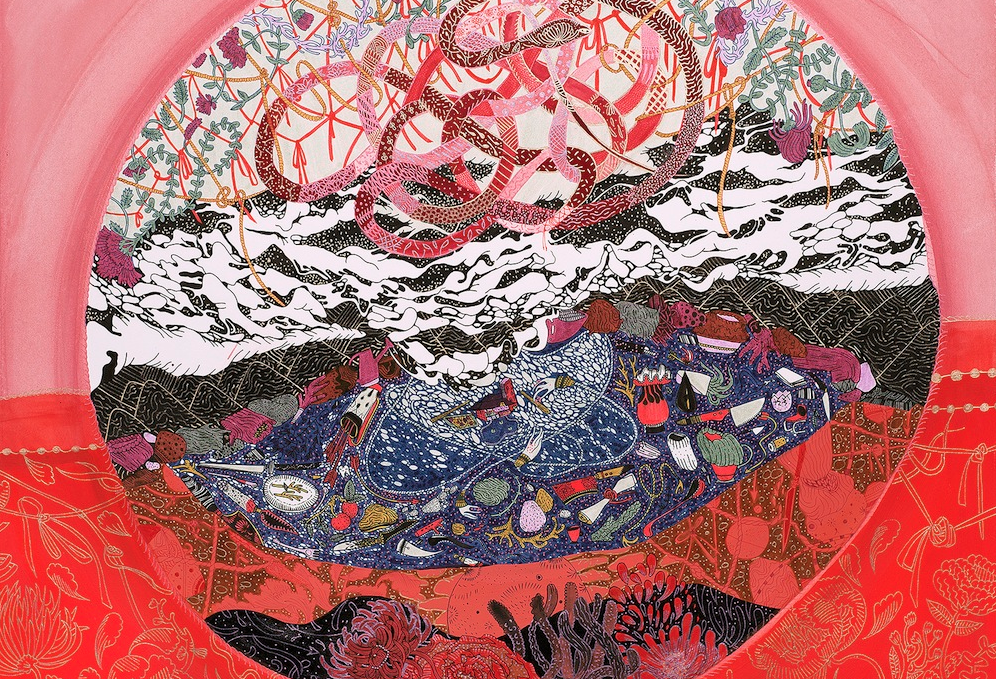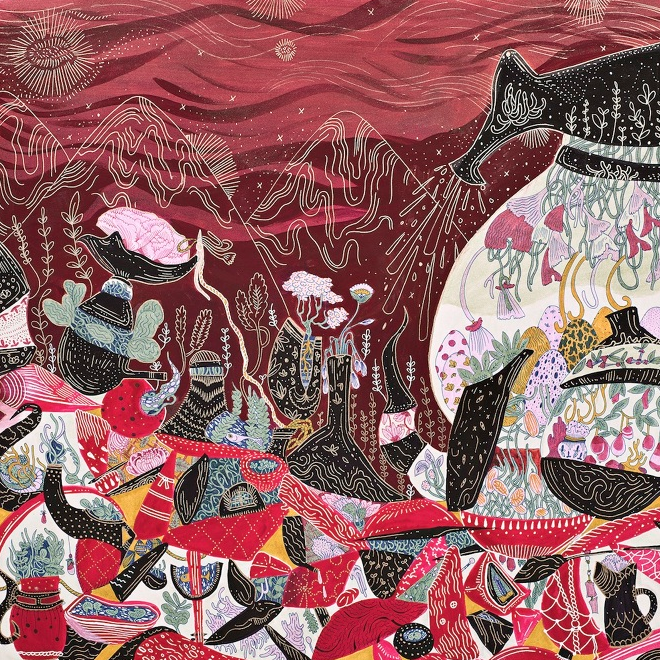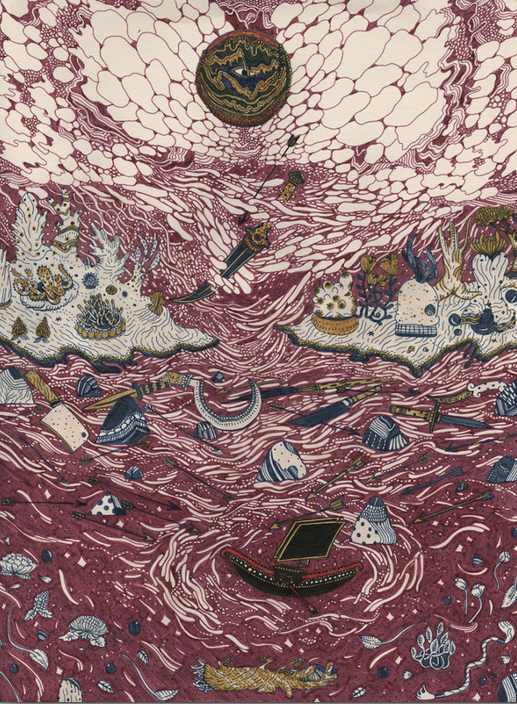
Opulence beyond/before materialism with Sab Meynert
On first glance, artist Sab Meynert‘s pieces are the gel pen wonderland you wish you created in your black-paper 90s diary. What’s really special about Meynert’s works though, is the amount of motion and emotion backed into a landscape. Without any human figures, her work details epic struggles navigating human developments in nature in a way that merits a long look.
We’re happy to work with Sab for Konversation – “Opulence” (See the exhibit –>)
A queer brown Catholic-raised POC, Sab’s upbringing in what used to be a not-so-brown working class suburb outside Toronto impacted her expression. “Being one of two brown kids at her school, there was a stigma attached to being brown and visibly wearing certain patterns or colors that would stereotypically read into your brownness.” A fan of comics and manga since a young age, her style was always line heavy and narrative driven, but as she came of age her content became her own.
“In 2011, I had a epiphany that I connected less to the body, and more to symbolism reflecting the bodily emotions, so I stopped drawing people. I didn’t see myself reflected in my peer’s work, so I decided to navigate out of it and communicate through illustration with symbols. The emotions behind the face, rather than the actual face.”
Ironically, taking humans out of her art allowed the human behind the art to flourish as her drawings became a way to deal with anxiety and map out the thoughts and feelings she would ponder. As she got into more complicated issues, the drawings became more complicated. “Right now my work is changing to amalgamate themes of organic vs articial materials, and how they are like each other, but get transfigured so much to where their similarity is unrecognizable. You’ll see more artificial structures integrated into my work like architecture, since architecture can be a big physical manifestation of emotion, for example in monuments.”
B: What thoughts lead up to you deciding the title for our Konversation- Opulence?
SM: I’ve been thinking about opulence a lot, because from the get go there is a loaded quality to it, “full, flourishing,” but in a really materialistic territorial way that reminds me of something artificial. The first images that come to my mind when I hear the word are colonization and the Rococo movement in Europe. Physical significance was seen differently in Asian perspectives of physical, material, emotional, or mental wealth, but opulence usually only refers to one: material wealth.
SM: In my image I took the organic take on opulence as an abundance teeming with life, whether its valued through constructed monetary or social value or not. My crowded collection of objects reflects opulence of an abundance of objects given value because I feel for them. I included empty space to recognize the full space- since if everything was as ornate as a Rococo palace, then you wouldn’t recognize it as opulent. We need contrast to give meaning to anything that exists, cuz it’s all going to keep turning anyway.”
B: Have people ever read extra into your symbolsm (or extra myopically) because of your ethnic background?
SM: “When the general public see me then sees my art, some people read too far into the symbolism in a really ignorant way. Like, ‘Oh! I can really see the Marrakech here!’ or ‘I can really see your native roots!’ I was raised Catholic so snakes and daggers are loaded for me for reasons besides being South East Asian. Showing in galleries in Yorkville (traditionally opulent part of the city), I’ve learned though that even if you come from a higher income bracket or social class that those who are well-travel or well-exposed appreciate my art and won’t take offense or be defensive or patronizing.”


